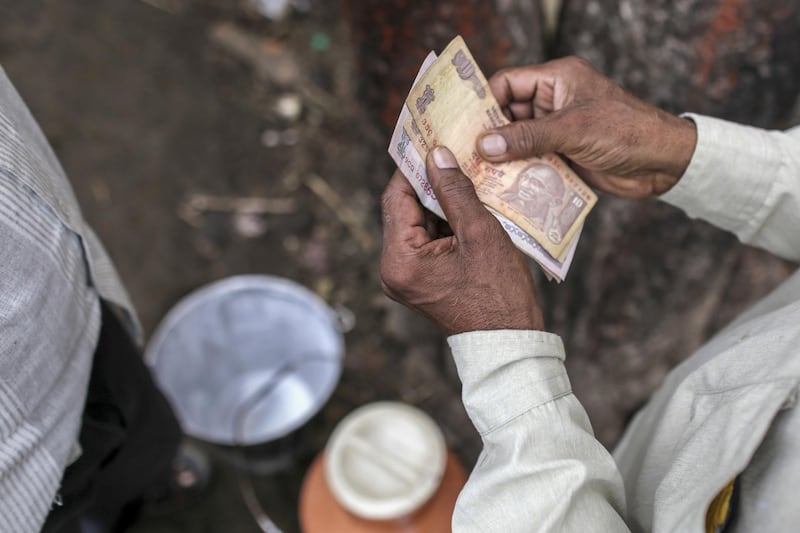The Indian rupee is set to depreciate this year, analysts are forecasting.
The rupee, which is trading at about 63.50 to the US dollar is expected to trade at an average of 66.06 in the financial year between April 2018 and March 2019, according to India Ratings and Research, which is part of Fitch Group.
A weaker Indian rupee makes imports more costly for India, including gold, with the country importing hundreds of tonnes of the metal every year. But a decline in the rupee's value is favourable for Indian expats earning in US dollars or UAE dirhams, pegged to the dollar, because it allows them to buy more rupees with their earnings.
“The Indian rupee will continue to be affected by factors such as position of balance of payments, relative inflation and growth differential with the US and nature of capital flows,” India Ratings writes in a research note,
It forecasts that the current account deficit will widen to 1.9 per cent of GDP in the approaching financial year compared to 1.6 per cent the previous year.
Others are also bearish on the currency.
_______________
Read more:
Analysts say Modi's foreign investment reforms don't go far enough
AirAsia considers IPO for selling stake in Indian unit
_______________
“Looking ahead, it seems more likely that the rupee will depreciate rather than appreciate against the dollar,” says Shilan Shah, the chief economist at Capital Economics. “After all, India runs a perennial current account deficit, while the country also has a structurally higher rate of inflation than most of its peers.”
He says that the depreciation is, however, expected to be “gradual, rather than a sudden and sharp shock”.
“A high level of foreign exchange reserves makes the rupee far less vulnerable to sharp sell-offs like the one experienced in 2013.”
Exporters in India would favour a weaker currency going forwards, which could give exports a much-needed boost.
The latest economic outlook survey by the Federation of Indian Chambers of Commerce and Industry, revealed that economists surveyed believed that high interest rates should be reviewed by the Reserve Bank of India to reduce the value of the rupee because “an overvalued exchange rate hurts exports”.





